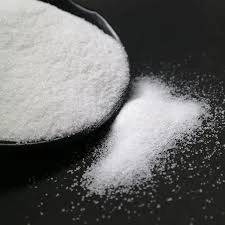The Role of L-Ornithine L-Aspartate in Hepatic Encephalopathy
Hepatic encephalopathy (HE) is a complex neuropsychiatric condition that arises as a complication of liver disease, particularly cirrhosis. The condition is characterized by a spectrum of neurological symptoms, ranging from mild confusion to severe cognitive impairment and coma. One of the key contributors to HE is the accumulation of toxins, particularly ammonia, which the damaged liver struggles to eliminate. This accumulation disrupts neurotransmission, alters the blood-brain barrier, and significantly impacts brain function.
Among the therapeutic interventions designed to manage HE, L-Ornithine L-Aspartate (LOLA) has emerged as a prominent option. This compound is a synthetic amino acid that plays a crucial role in the urea cycle, a metabolic pathway responsible for detoxifying ammonia in the liver. By enhancing the activity of key enzymes involved in this cycle, LOLA can help reduce the levels of ammonia in the bloodstream, thereby alleviating the symptoms of HE.
The mechanism of action of LOLA is multifaceted. It not only facilitates the conversion of ammonia to urea in the liver but also promotes glutamine synthesis in the brain. The conversion of ammonia to glutamine occurs in the astrocytes, the supportive cells of the brain. While this process may temporarily sequestrate ammonia, excessive glutamine can lead to cellular dysfunction and contribute to the symptoms of HE. However, the balanced effects of LOLA may help in optimizing this process, supporting overall neuronal health.
l ornithine l aspartate in hepatic encephalopathy

Clinical studies have demonstrated the efficacy of LOLA in improving cognitive function and reducing the severity of HE symptoms. Patients receiving LOLA exhibited significant reductions in ammonia levels along with improvements in their mental status and quality of life. Moreover, LOLA has been shown to have a favorable safety profile, with minimal side effects, making it an appealing option for long-term management of patients with HE.
In addition to its use in acute episodes of hepatic encephalopathy, there is growing interest in the potential of LOLA as a preventative measure
. Patients with liver cirrhosis are at an increased risk of developing HE, and administering LOLA as prophylaxis may help to stabilize ammonia levels and prevent the onset of neurological symptoms.Moreover, LOLA’s ability to enhance liver function and promote nitrogen metabolism ties it closely with overall liver health. This makes it a promising adjunct therapy in the comprehensive management of patients with chronic liver disease.
In conclusion, L-Ornithine L-Aspartate represents a valuable therapeutic agent in the management of hepatic encephalopathy. Its ability to mitigate ammonia toxicity, enhance cognitive function, and improve patients' quality of life underscores its clinical significance. As research continues, LOLA may not only provide symptomatic relief but also serve as a cornerstone in the preventive strategy against the neuropsychiatric complications of liver disease, reinforcing the critical need for effective intervention in patients at risk.

